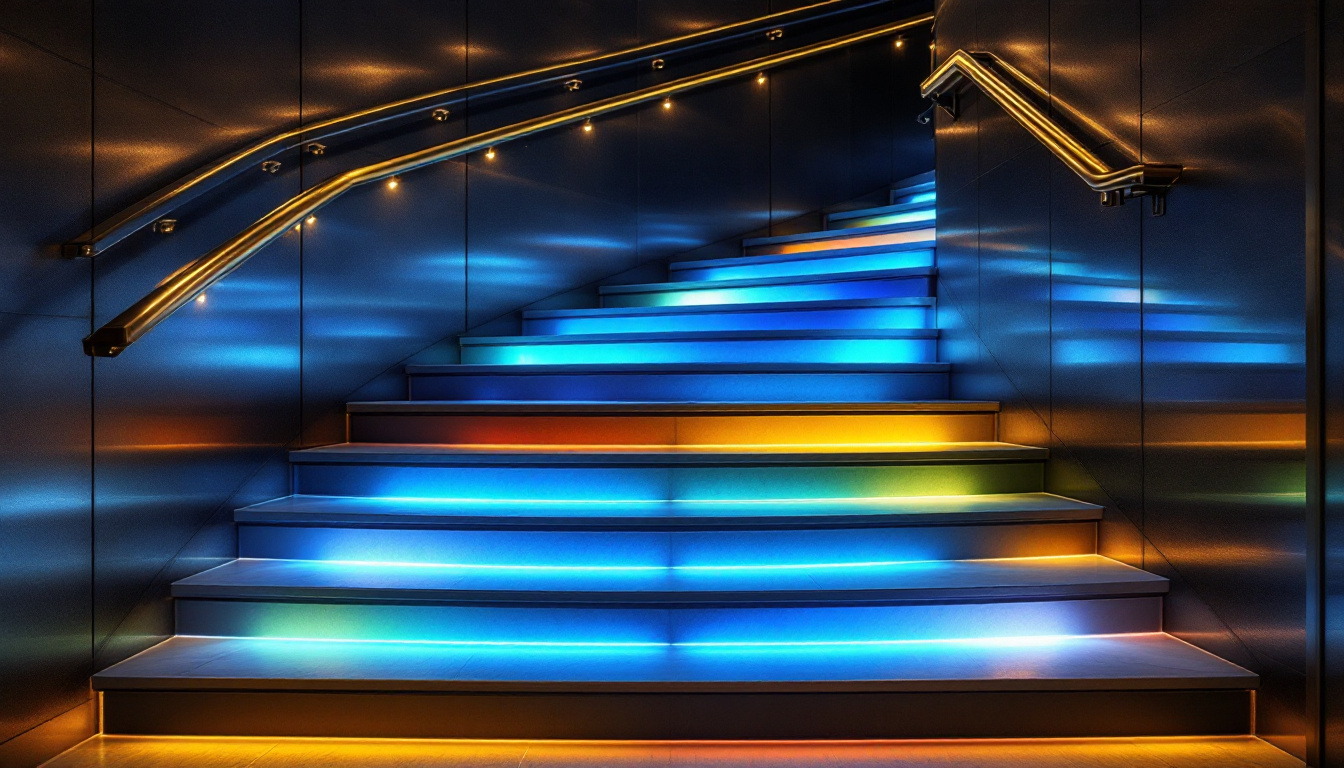
Lighting Technology: Top Challenges for Lighting Contractors
The evolution of lighting technology has transformed the way contractors approach their projects. From traditional incandescent bulbs to advanced LED systems, the landscape is constantly changing. This rapid evolution brings both opportunities and challenges for lighting contractors. Understanding these challenges is crucial for staying competitive and delivering high-quality results.
As the industry continues to innovate, contractors must adapt to new technologies, regulations, and customer expectations. This article will explore some of the top challenges faced by lighting contractors today, providing insights and strategies to navigate this dynamic field.
One of the most significant advancements in lighting technology is the shift towards energy-efficient solutions. LED lighting, for instance, not only consumes less power but also has a longer lifespan compared to traditional lighting options. This transition has been driven by increasing environmental awareness and the need for sustainable practices in construction. Contractors are now tasked with educating clients about the benefits of these technologies, including potential cost savings on energy bills and reduced carbon footprints. However, this also means staying updated on the latest products and understanding the intricacies of installation and maintenance, which can vary significantly from older systems.
Moreover, the integration of smart lighting systems has introduced a new layer of complexity to lighting projects. These systems allow for enhanced control and customization, enabling users to adjust brightness, color, and even schedule lighting based on their preferences. However, implementing smart technology requires contractors to have a solid grasp of networking and software, as well as the ability to troubleshoot potential issues that may arise. As consumers increasingly demand smart solutions, contractors must not only keep pace with technological advancements but also develop their skills to ensure they can meet these evolving expectations. This ongoing education is essential for maintaining a competitive edge in a rapidly changing market.
One of the most significant challenges in the lighting industry is the pace of technological advancements. New products and solutions are continually being introduced, making it difficult for contractors to keep up. This rapid change can lead to confusion and uncertainty, both for contractors and their clients. As the industry evolves, the introduction of energy-efficient options, such as LED and OLED technology, has transformed the way lighting is designed and implemented, pushing the boundaries of creativity and functionality.
To effectively navigate these advancements, lighting contractors must prioritize ongoing education. This includes attending industry conferences, participating in training sessions, and subscribing to relevant publications. By staying informed about the latest technologies, contractors can make better decisions and provide clients with the most current options available. Furthermore, online courses and webinars have become invaluable resources, allowing contractors to learn at their own pace and access information from industry leaders across the globe.
Moreover, engaging with manufacturers and suppliers can also provide valuable insights into upcoming trends. Building strong relationships with these stakeholders can enhance a contractor’s knowledge base and help them stay ahead of the curve. Networking with peers in the industry can also foster collaboration and the sharing of best practices, enabling contractors to refine their skills and adapt to new challenges more effectively.
The rise of smart lighting technology presents both opportunities and challenges. While smart systems can enhance energy efficiency and user experience, they also require a different set of skills and knowledge. Contractors must familiarize themselves with the intricacies of smart technology, including networking, software integration, and user interfaces. Understanding the compatibility of various systems and devices is crucial, as clients often seek seamless integration with existing home automation systems.
Additionally, clients may have varying levels of comfort with smart technology. Some may be eager to adopt the latest innovations, while others may prefer traditional solutions. Contractors must be prepared to educate clients on the benefits and limitations of smart lighting, ensuring they make informed decisions that align with their needs. This might involve demonstrating how smart lighting can be controlled via mobile apps or voice-activated assistants, showcasing the convenience and flexibility these systems offer. By addressing concerns and providing tailored solutions, contractors can build trust and foster long-lasting relationships with their clients.
Lighting contractors must navigate a complex landscape of regulations and standards that govern the industry. Compliance with these regulations is essential to ensure safety, efficiency, and environmental sustainability. However, staying up-to-date with changing regulations can be a daunting task.
Each region may have its own set of building codes and regulations that dictate lighting design and installation. Contractors must be well-versed in these local codes to avoid potential legal issues and ensure client satisfaction. This often requires a thorough understanding of energy efficiency standards, safety regulations, and environmental guidelines.
Regularly reviewing and updating knowledge of local codes can help contractors remain compliant and avoid costly mistakes. Collaborating with local authorities and industry associations can also provide valuable resources and support in navigating these regulations.
As sustainability becomes a priority for many clients, contractors must also be aware of environmental standards related to lighting. This includes understanding energy-efficient products, waste management, and the lifecycle impact of lighting solutions. Contractors who can demonstrate a commitment to sustainability will not only meet client expectations but also position themselves as leaders in the industry.
Incorporating sustainable practices into lighting projects can also lead to cost savings for clients. By utilizing energy-efficient technologies and practices, contractors can help clients reduce their energy consumption and lower operating costs over time.
In today’s competitive market, clients have higher expectations than ever before. They are more informed and expect contractors to provide comprehensive solutions that meet their specific needs. Effective communication is crucial in managing these expectations and ensuring client satisfaction.
Lighting contractors must take the time to understand their clients’ unique requirements. This involves asking the right questions and actively listening to their concerns and preferences. By gaining a deep understanding of the client’s vision, contractors can tailor their solutions to meet those needs effectively.
Furthermore, presenting clients with multiple options and clearly outlining the pros and cons of each can help them make informed decisions. Transparency in the decision-making process fosters trust and strengthens the contractor-client relationship.
Timelines are often a critical aspect of any lighting project. Clients expect timely completion, and delays can lead to frustration and potential financial repercussions. Effective project management is essential to ensure that projects stay on track.
Contractors should establish clear timelines and communicate them to clients from the outset. Regular updates on project progress can help manage expectations and address any potential issues before they escalate. Utilizing project management tools can also streamline communication and enhance efficiency throughout the project lifecycle.
The global supply chain has faced numerous disruptions in recent years, impacting the availability of lighting products and materials. Contractors must navigate these challenges to ensure they can deliver projects on time and within budget.
Product shortages can lead to delays and increased costs, making it essential for contractors to have contingency plans in place. Building strong relationships with multiple suppliers can provide access to alternative products and mitigate the impact of shortages.
Additionally, staying informed about market trends and potential supply chain disruptions can help contractors anticipate challenges and adjust their procurement strategies accordingly. Proactive planning can minimize the impact of shortages on project timelines and budgets.
Rising material costs can also pose a significant challenge for lighting contractors. Fluctuations in prices can affect project budgets and profitability. Contractors must be adept at managing costs while still delivering high-quality solutions.
Implementing strategic sourcing and negotiating with suppliers can help contractors secure better pricing. Additionally, exploring innovative lighting solutions that offer long-term cost savings can provide added value to clients and enhance the contractor’s reputation.
The lighting industry, like many others, is facing a shortage of skilled labor. This challenge can impact project timelines, quality, and overall client satisfaction. Contractors must find ways to attract and retain talent in a competitive job market.
To address the skilled labor shortage, lighting contractors should invest in training and development programs for their workforce. Providing ongoing education and certification opportunities can enhance the skills of existing employees and attract new talent.
Additionally, partnering with local trade schools and vocational programs can create a pipeline of skilled workers. By collaborating with educational institutions, contractors can help shape the curriculum to align with industry needs, ensuring a steady flow of qualified candidates.
Attracting and retaining skilled workers also requires creating a positive work environment. Contractors should focus on fostering a culture of collaboration, recognition, and growth. Offering competitive compensation and benefits packages can also enhance employee satisfaction and loyalty.
Furthermore, promoting work-life balance and providing opportunities for advancement can help contractors build a committed and skilled workforce. A strong team can significantly impact project success and client satisfaction.
The lighting industry is evolving rapidly, presenting both challenges and opportunities for contractors. By understanding and addressing these challenges, lighting contractors can position themselves for success in a competitive marketplace. Staying informed about technological advancements, navigating regulatory compliance, managing client expectations, and addressing supply chain and labor issues are all critical components of a successful lighting business.
As the industry continues to change, embracing innovation and adapting to new trends will be essential. By investing in education, fostering strong relationships, and prioritizing client satisfaction, lighting contractors can thrive in this dynamic environment.
Ultimately, the future of lighting technology holds great promise. By overcoming the challenges that lie ahead, contractors can not only enhance their own businesses but also contribute to a more sustainable and efficient lighting landscape for all.
As you navigate the future of lighting technology and tackle the challenges outlined in this article, partner with LumenWholesale for an unbeatable advantage. We provide spec-grade lighting products that meet the highest industry standards, ensuring your projects shine with reliability and performance. With our direct-to-contractor wholesale pricing, free shipping on bulk orders, and a commitment to quality and convenience, you’ll find everything you need to stay ahead in the competitive lighting landscape. Don’t let inflated markups dim your potential—choose LumenWholesale for Wholesale Lighting at the Best Value and illuminate the path to success.

Discover the latest trends in lighted stairs that every lighting contractor needs to know.

Discover the essentials of 10Ft power cord linkable shop lights and their compliance standards.

Explore the essential considerations for lighting contractors when working with dimmers.

Discover the transformative impact of solar outdoor lamps on modern lighting projects.